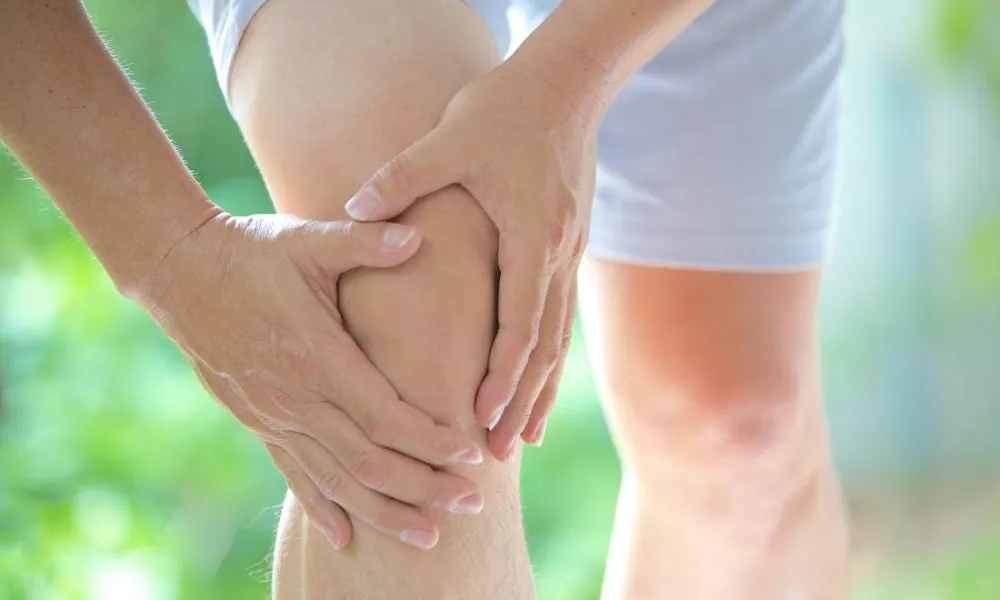
Knee Arthroscopy
Knee Arthroscopy
Call Proliance Orthopedic Associates at 425-656-5060 immediately if you experience any of the following:
- Increasing redness, particularly spreading from the incisions
- Rapidly increasing pain and swelling
- Fevers greater than 101.5◦ F
- Persistent drainage from your wound
- Calf swelling or pain, particularly if associated with ankle motion
- Severe ankle swelling that does not decrease or resolve overnight
How long does the surgical procedure take and what exactly is done?
The actual surgery time is usually about 30 minutes. If extensive work is needed, the procedure may last up to 45 minutes. Most people "go to sleep completely" during surgery with a general anesthetic. Some have surgery with a spinal anesthetic.
Three or four small incisions are made to allow special instruments, including a fiber-optic camera, to be placed into your knee. Sterile saline (salt water) is brought into the knee joint continuously with tubing to provide a clear view for the surgeon. Torn parts of the meniscus and/or damaged cartilage on the bone surfaces are carefully removed with special arthroscopic instruments. The end result is a knee lined with smooth and stable tissues rather than rough edges.
What is the recovery time?
Everyone heals from their knee surgery at a different pace. If necessary, patients use crutches or a walker for one to three days after surgery. If your pain is minimal then you do not have to use crutches or a walker. Once more comfortable, most people are able to walk with just a slight limp within five days after surgery. Some people find a cane to be helpful. If you use a cane, place it in the hand opposite the knee that was operated on.
It takes up to six weeks for the knee joint to re-establish normal joint fluid after arthroscopic surgery. Because of this, you may not realize the benefits of your surgery for four to six weeks. There is a high degree of variability in recovery times. Some patients are able to return to regular activities within two weeks, but most require roughly six weeks before they can resume full activities - including sports - comfortably. Reduction of pain and swelling and improvement in strength, motion, and coordination may continue for three to four months.
Will I have stitches and when do they come out?
In most cases the small incisions are closed with Steri-strips and no stitches are used. Steri-strips are somewhat waterproof, lasting seven to 10 days and then they begin to peel back at the edges.
If stitches are used, they may be under the level of the skin and will absorb with time. If they are nylon stitches, they will need to be removed seven to 14 days after surgery. This will be done at your first post-operative visit.
How long do I need to use a bandage?
The initial bandage often gets soaked with fluid and blood. Drainage after surgery should gradually decrease after 48 hours, and then Band-Aids are usually sufficient over the small incisions. If desired, dry sterile gauze pads and an Ace wrap can be continued to protect the incisions from irritation from clothing, pets, young children, etc. Once the incisions are completely dry the use of a bandage is optional.
Do I need a knee brace?
Knee braces after simple arthroscopic knee surgery are rarely used. However, if your surgery involves more than just removal of torn cartilage or meniscus - for example, if you have a meniscal repair - your knee may be placed in a brace after surgery. If you have a neoprene sleeve for your knee that you used before surgery and desire to use it after surgery, do not begin wearing it until your wounds have completely stopped draining. If you use a neoprene sleeve, be sure to take it off for several hours a day to allow your skin to breathe.
When can I shower?
You can shower 48 hours after your surgery if there is no drainage from your incisions. Do not scrub directly over your incisions and gently pat the incisions dry after showering.
When can I immerse my knee in water to bathe or swim?
Two weeks after surgery if there is no drainage from your incisions.
How long will I be on pain medications?
You will likely need some form of pain medication for two to three weeks. Again, there is a high degree of variability with some using narcotic medication for less than one week, and others for up to four weeks. Most people are able to wean off narcotic medication within one month and switch to an over-the-counter pain medication such as Tylenol or ibuprofen.
If you do not have serious medical problems such as hypertension, heart disease, kidney or liver impairment, or a history of prior stomach/intestinal ulcers or reflux, it may be helpful to take an anti-inflammatory medication in addition to your narcotic medication immediately after surgery. Your surgeon will usually recommend this at the time of surgery if appropriate. Stop all anti-inflammatory medications if they cause severe stomach pain, bloody stools, or severe swelling in your extremities.
Do I need physical therapy?
Many patients are sent to physical therapy after knee arthroscopy, and this is usually decided at the first post-operative visit. Some patients regain motion very quickly and have minimal swelling and therapy may not be necessary for them. Or, they may only have to go once or twice to learn a home program. Your surgeon will decide what is best for you.
What exercises should I do after surgery?
You are encouraged to bend and straighten your knee as much as pain allows immediately after standard knee arthroscopy. Remember, however, that your knee may be swollen and full motion may be difficult for the first few days. You may tighten your quadriceps muscle right after surgery and we encourage straight leg raises if they are not too painful. Massaging the patella (kneecap) with your leg straight is also beneficial. Using your fingers, push the patella in all four directions (up, down, left, and right) and hold it for 10 seconds in each direction. This helps prevent scar formation and tightness around the patella during the recovery period.
You can put as much weight on your leg as is comfortable immediately after surgery. Again, the usual need for crutches or a walker is about two or three days. Riding on an exercise bike, using a treadmill or elliptical machine, or just plain walking are all good exercises to begin once the knee is less painful. Do not be surprised if your knee has a tendency to swell after such activities; remember to ice and elevate the knee afterwards.
Can I exercise with weights?
Generally, not for the first three weeks. However, as each person's strength varies, some patients are able to resume weight training exercises with their legs sooner than three weeks. Use light weights to begin with and progress gradually.
When can I drive?
You can drive as soon as you feel comfortable, but YOU MUST NOT DRIVE IF YOU ARE TAKING NARCOTICS! If you drive a standard transmission vehicle and had surgery on your left knee, you should wait one week before driving to avoid causing more pain/irritation from operating the clutch. If you need to drive long distances within two weeks after your surgery, you should take frequent breaks to stand up, stretch, and walk for 10 minutes per hour to decrease the risk of a blood clot forming.
When can I return to work?
This depends on your profession. Typically, if your work is primarily sedentary you may be able to return within one week. If your work is extremely rigorous, you may require eight to 10 weeks before you return to full duty. Your physician will help you determine an appropriate return-to-work date, and will also provide any needed paperwork.
When can I travel?
You may travel as soon as you feel comfortable, but it is recommended that long trips be avoided for two weeks after surgery due to an increased risk of blood clots in the legs. If a long trip is unavoidable in the early post-operative period, we recommend that you get up to stretch or walk for at least 10 minutes per hour to decrease the risk of a blood clot.
Should I use ice or heat?
Ice should be used for the first several days, particularly if you have a lot of swelling or discomfort. Ice is also helpful if you develop swelling after exercising. Once the initial swelling has decreased, you may use either ice and/or heat depending on which helps you the most. Some patients report that using heat prior to activities helps "warm up" the knee.
When do I need to follow up with my surgeon?
Follow-up appointments should be made post-operatively at seven to 10 days, again at four to six weeks and then again at three months if you are not better. The three month appointment is not necessary if things are going well.



